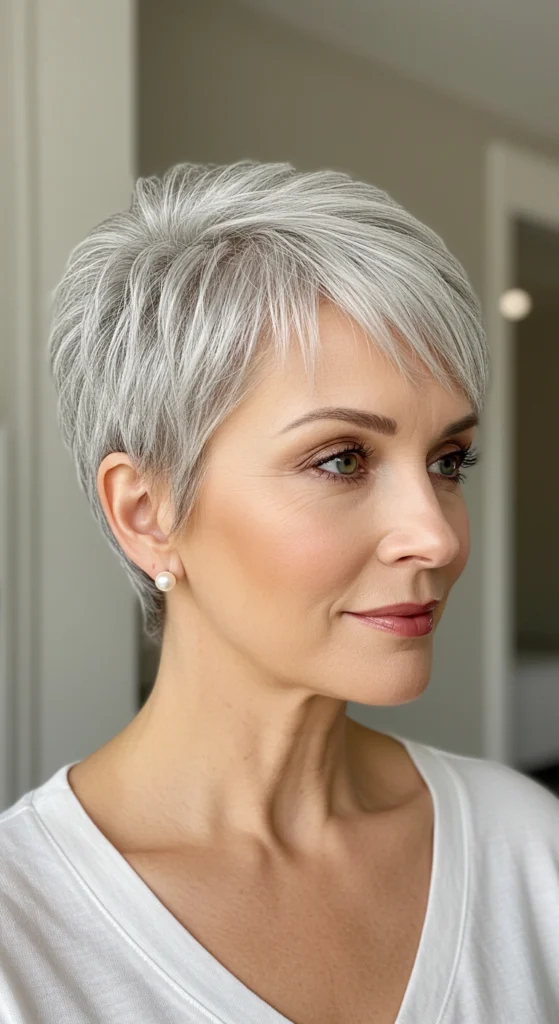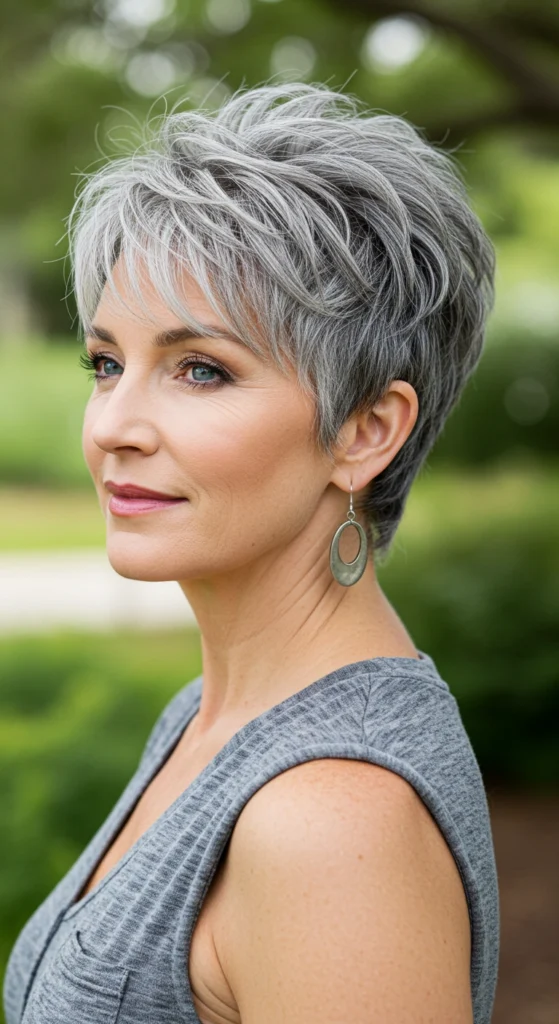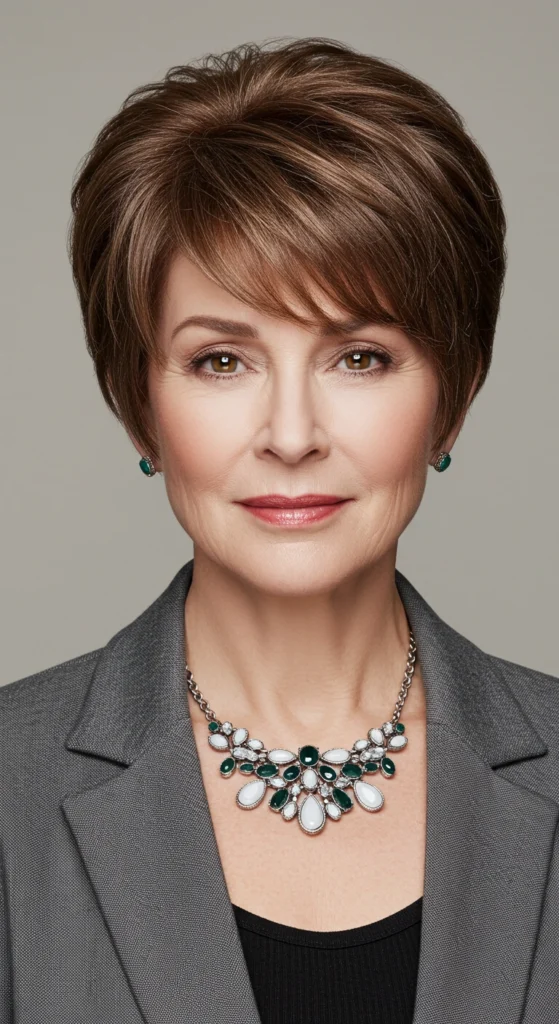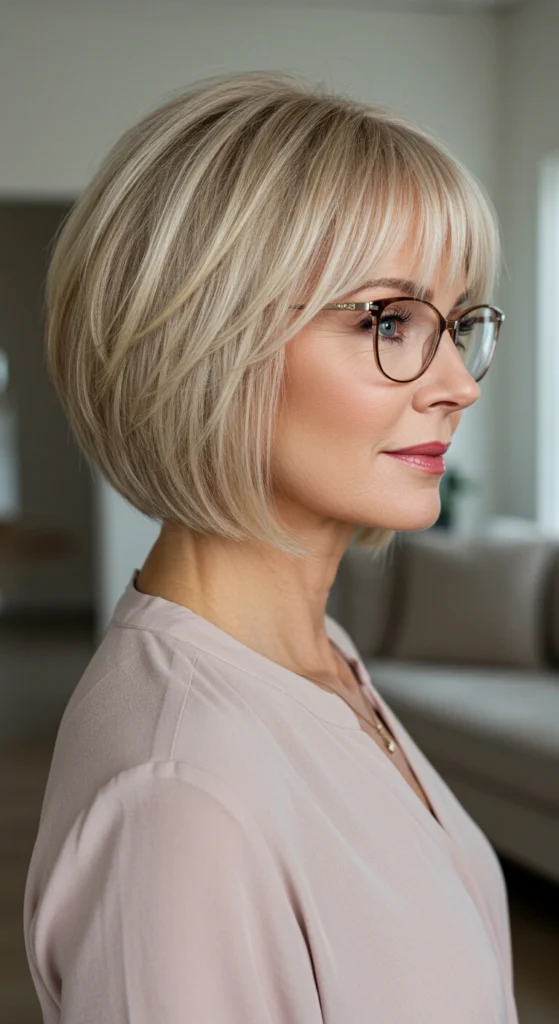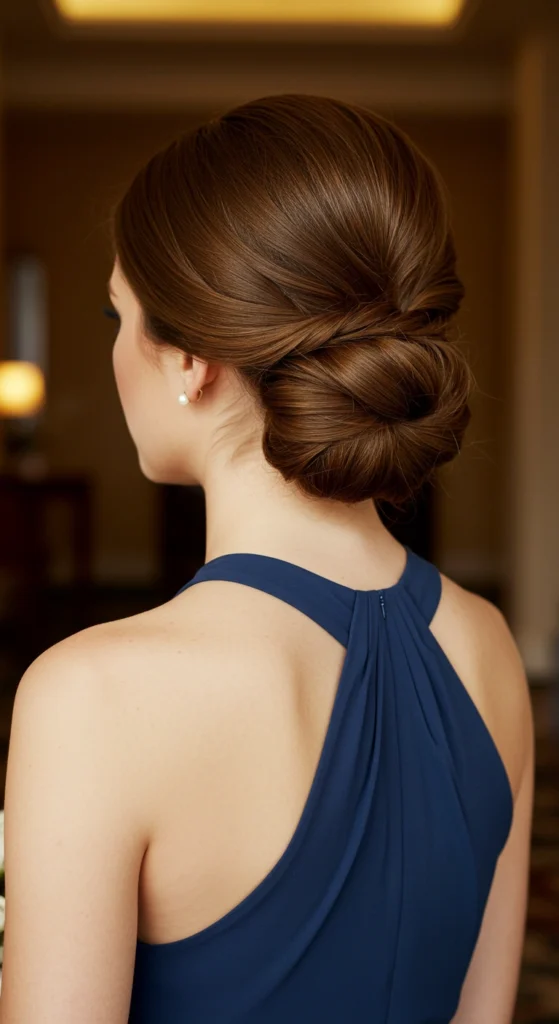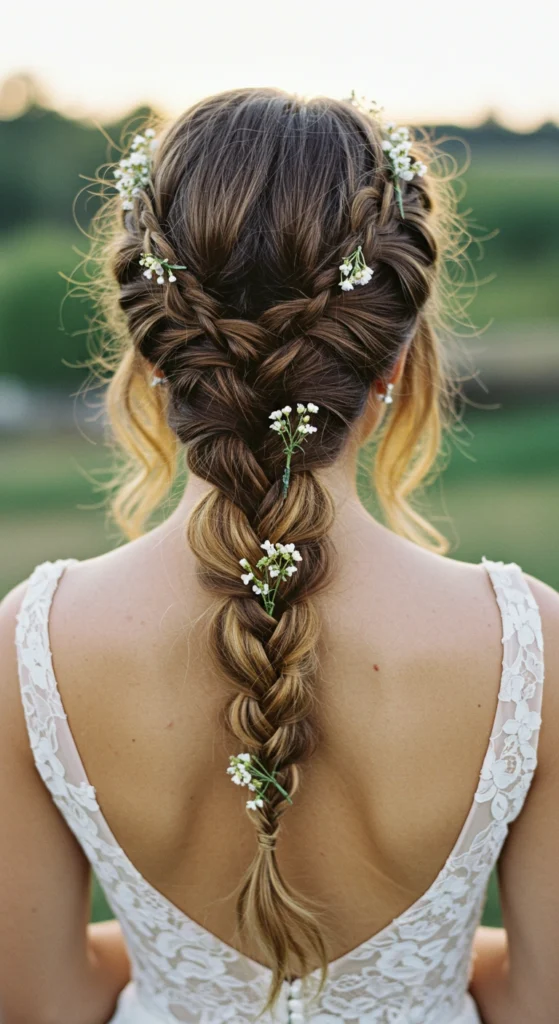Introduction :
If you’ve heard these outdated opinions, it’s time to dismiss them once and for all. The notion that women over 50 must resign themselves to a limited catalog of “age-appropriate” hairstyles belongs firmly in the past. Today’s woman knows that the second half of life often brings newfound confidence, personal clarity, and the freedom to express herself authentically—starting with her hair.
That said, many women do face legitimate concerns about their changing hair as they move through midlife. Thinning strands, shifting textures, and graying color can require adaptations to familiar styling routines. Some find themselves seeking lower-maintenance options to accommodate busy lifestyles, while others balance the desire to look vibrant without appearing to chase youth too desperately.
This comprehensive guide explores the most flattering hairstyles for women over 50, taking into account the multitude of factors that influence hair decisions—from texture and face shape to lifestyle preferences and coloring choices. Above all, we emphasize that confidence and personal expression remain the foundation of any truly successful hairstyle, regardless of age.
Key Factors Influencing Hairstyle Choice
Before diving into specific styles, it’s essential to understand the various elements that should inform your hair decisions. The perfect cut isn’t just about following trends—it’s about finding harmony between your unique characteristics and current hair condition.
Hair Type and Texture
Perhaps the most fundamental consideration when choosing a hairstyle is working with—not against—your natural hair type. After 50, many women experience significant changes in texture, often finding their hair becoming finer, coarser, or developing unexpected waves or curls.
Fine Hair
Challenges: Fine hair frequently lacks volume and can appear flat or limp, especially as natural density decreases with age. It may struggle to hold styles and can become overwhelmed by heavy products.
Recommended Styles: Layered bobs create the illusion of fullness through strategic cutting, while textured pixie cuts maximize what volume exists by keeping length primarily at the crown. Blunt cuts can work beautifully for fine hair when properly styled, creating the appearance of thickness through clean lines. However, extremely long styles typically weigh down fine hair, making it appear even thinner.
Styling Tips: Volumizing mousses and sprays applied at the roots before blow-drying can create significant lift. For special occasions, gentle backcombing at the crown adds height without damaging the hair shaft. Dry shampoo can be a fine-haired woman’s best friend, adding texture and absorbing oils that weigh hair down.
Thick Hair
Challenges: While many women envy thick hair, it comes with its own difficulties—potentially feeling heavy, becoming unmanageable in humidity, and requiring significant styling time.
Recommended Styles: Layered cuts remove bulk and weight while maintaining length if desired. The long bob (or “lob”) often proves ideal for thick hair, providing enough length to weigh down potential poofiness while keeping the overall silhouette fresh and modern. Styles that incorporate the natural texture rather than fighting it typically require less daily maintenance.
Styling Tips: Texturizing products help define layers and reduce frizz without creating stiffness. Smoothing serums applied to damp hair before blow-drying can significantly reduce styling time. Professional thinning by an experienced stylist removes weight without creating obvious layers.
Curly Hair
Challenges: Curly hair often experiences increased dryness after 50 as oil production diminishes. Maintaining consistent curl patterns and managing frizz can become more difficult, especially in changing weather conditions.
Recommended Styles: Layered cuts enhance natural curl patterns by allowing each curl to form fully without being weighed down. Modern shag haircuts have made a triumphant return and work beautifully with curly textures by creating movement and dimension. Longer styles can help weigh down particularly springy curls. Avoid blunt cuts, which often create a triangular or boxy shape with curly hair.
Styling Tips: Hydrating masks applied weekly help maintain moisture levels critical for curl definition. Diffusing with a blow dryer preserves curl patterns while reducing frizz. The “plopping” technique—wrapping wet, product-coated hair in a microfiber towel or t-shirt—enhances natural curl formation without heat damage.
Straight Hair
Challenges: Straight hair can lack dimension and movement, appearing flat or lifeless without proper styling. The reduced elasticity that comes with aging can make straight hair particularly vulnerable to breakage when heat-styled.
Recommended Styles: Incorporating layers creates natural movement even when air-dried. Bobs with soft waves add dimension without requiring elaborate styling. Bangs (fringe) can add interesting architectural elements to otherwise simple straight styles.
Styling Tips: Texturizing sprays add grip and subtle volume to slippery straight strands. Using larger barrel curling tools creates gentle waves rather than tight curls, resulting in a more natural movement. Strategic layering by an experienced stylist can create the illusion of volume even with minimal styling.
Face Shape
While personal preference should always be the primary consideration when choosing a hairstyle, understanding how different cuts interact with face shapes can help achieve balanced, flattering proportions.
Round Face
Goal: Create visual length and defined angles to counterbalance fullness.
Recommended Styles: Styles with added height at the crown elongate the face vertically. Long layers that begin below the chin draw the eye downward, creating the illusion of length. Asymmetrical bobs add interesting angles that break up roundness. Avoid cuts that end directly at the widest part of the face or create excessive volume at the sides.
Oval Face
The oval face shape is often considered the most versatile, accommodating virtually any hairstyle. Rather than focusing on “correcting” proportions, women with oval faces can make choices based primarily on hair texture, personal style, and lifestyle needs.
Square Face
Goal: Soften the appearance of a strong jawline without hiding this striking feature completely.
Recommended Styles: Layered cuts that frame the face gently reduce angular appearances. Side-swept bangs create diagonal lines that soften squareness. Wavy styles with movement around the face distract from angular jawlines. Avoid blunt cuts that end directly at the jaw, as they emphasize rather than complement this feature.
Heart-Shaped Face
Goal: Balance a broader forehead with a narrower chin.
Recommended Styles: Chin-length bobs add visual width at the jawline. Side parts redistribute volume more evenly across the face. Styles with fullness at the jaw level create balance with the forehead. Avoid excessive height at the crown, which can exaggerate the narrowness of the chin.
Lifestyle and Maintenance Considerations
Even the most beautiful hairstyle becomes a burden if it doesn’t align with your lifestyle and maintenance preferences. After 50, many women reassess their relationship with time-consuming beauty routines, seeking styles that complement rather than complicate their lives.
High-Maintenance Options
Some women enjoy the ritual of hair styling and are willing to commit to regular salon visits and daily styling routines. High-maintenance styles might include:
- Precision cuts that require frequent trimming to maintain their shape (every 4-6 weeks)
- Complex color treatments with multiple tones requiring regular touch-ups
- Styles dependent on heat tools for their intended appearance
- Very short cuts that lose their shape quickly as they grow
Low-Maintenance Options
For those preferring to minimize styling time and salon frequency, numerous stylish options require minimal upkeep:
- Bobs with natural movement that look good even when simply air-dried
- Pixie cuts textured to work with, not against, natural hair patterns
- Longer layers that fall naturally and don’t demand precise placement
- Styles that incorporate rather than fight natural texture
- Color strategies that grow out gracefully, requiring less frequent touch-ups
Color Considerations
Hair color choices take on new significance after 50, whether embracing natural graying, covering it completely, or finding a harmonious middle ground.
Embracing Gray Hair
The silver revolution has transformed how we view gray hair, with many women choosing to showcase rather than conceal their natural color evolution. For those embracing gray:
Transition Tips: Growing out dyed hair to reveal natural gray can be challenging. Options include cutting hair progressively shorter to remove colored portions more quickly, using temporary color to blend the line of demarcation during transition, or working with a colorist to add highlights/lowlights that create a more gradual shift.
Maintenance: Purple-toned shampoos and conditioners neutralize yellowish tones that can make gray hair appear dull. Silver-enhancing glazes applied periodically boost shine and vibrancy. Regular trims maintain shape and prevent split ends, which are often more visible in gray hair.
Enhancement Strategies: Adding strategic silver highlights can create dimension within predominantly gray hair. Lowlights in a shade close to your original color can create depth and a more multidimensional appearance.
Covering Gray Hair
Many women prefer to cover their gray, whether partially or completely:
Color Selection: The general rule of staying within two shades of your natural color becomes especially important after 50, as extremely dark colors can appear harsh against maturing skin. Warm skin tones typically look most harmonious with golden, amber, or copper tones, while cool skin tones pair beautifully with ash browns, cool blondes, or burgundy tints.
Techniques: Single-process color provides uniform coverage but requires more frequent root touch-ups. Highlighting and lowlighting techniques blend gray more gradually and grow out less noticeably. Root touch-up products extend time between salon visits.
Adding Dimension
Regardless of whether you’re embracing or covering gray, dimension prevents hair from appearing flat or artificial:
Highlighting Benefits: Strategic highlights around the face brighten complexion and draw attention to the eyes. They also create the illusion of movement and volume in the hair, particularly beneficial for finer textures.
Face-Framing Techniques: Lighter strands strategically placed around the face reflect light onto the skin, creating a natural illuminating effect that’s especially flattering for mature skin.
Recommended Hairstyles for Women Over 50
Now that we’ve explored the factors influencing hairstyle selection, let’s examine specific cuts and styles that consistently flatter women over 50.
Short Hairstyles
Short hair offers freshness, ease, and often a visual lift to facial features—benefits many women appreciate increasingly with age.
1.Pixie Cut
The pixie has evolved far beyond its original boyish incarnation, now encompassing numerous variations:
2.Classic Pixie: Very short at the sides and back with slightly longer layers on top, this timeless cut emphasizes facial features and requires minimal styling—perfect for those prioritizing ease over styling versatility.
3.Textured Pixie: Incorporating choppy layers and piece-y definition, the textured pixie offers more styling options and works beautifully with natural wave patterns. It’s particularly flattering for those with fine hair, as the texture creates the appearance of fullness.
4.Long Pixie: Featuring more length on top and at the front, this modern variation can be swept to the side or forward, offering more versatility than traditional pixies. The additional length allows for styling changes while maintaining the convenience of short hair.
5.Styling Tips: Rubbing a pea-sized amount of texturizing paste or cream between palms and then distributing through dry hair creates definition without stiffness. For special occasions, applying volumizing mousse to damp roots before blow-drying creates dramatic lift at the crown.
Bob Hairstyles
The bob remains an enduring classic for good reason—its clean lines create structure while offering considerable versatility.
Chin-Length Bob: Ending precisely at the jawline, this classic bob creates a strong, defined silhouette that draws attention to the jaw and neck. It works particularly well for those with oval or heart-shaped faces.
Layered Bob: Incorporating internal layers maintains the bob’s clean outline while adding movement and volume—especially beneficial for fine hair that might otherwise appear flat in a blunt cut.
A-Line Bob: Slightly shorter at the back and longer toward the face, this variation creates a subtle forward momentum that’s both modern and flattering. The angle draws the eye forward and downward, creating a slimming effect for round or full faces.
Graduated Bob: Featuring stacked layers at the back that create volume and movement, this dynamic variation adds significant fullness at the crown—ideal for those with fine or thinning hair.
Styling Tips: Blow-drying with a round brush creates smooth curves at the ends, while flat-ironing produces a sleeker, more contemporary line. For textured looks, applying mousse to damp hair and scrunching while air-drying enhances natural wave patterns.
Medium Hairstyles
Medium-length styles offer perhaps the greatest versatility, balancing the ease of shorter cuts with the styling options of longer hair.
Lob (Long Bob)
Falling anywhere from just below the chin to just above the shoulders, the lob has become a modern classic:
Versatility: The lob’s primary advantage lies in its adaptability—it can be worn sleek and straight for professional settings, tousled and wavy for casual occasions, or partially pinned up for elegant evenings.
Styling Options: Creating soft waves with a 1.25-inch curling iron provides texture without appearing overly “done.” For straight styles, a flat iron followed by smoothing serum creates polished results that remain touchably soft.
Shoulder-Length with Layers
This universally flattering option works across hair textures and face shapes:
Benefits: Strategic layering creates movement and prevents the “helmet hair” effect that can occur with one-length cuts. The shoulder-grazing length provides enough weight to keep hair behaving without feeling heavy or matronly.
Styling Tips: Blow-drying with a round brush creates smooth volume, while velcro rollers set at the crown while cooling can create lasting lift. For those embracing natural texture, applying curl-enhancing cream to damp hair before air-drying allows waves and curls to form without frizz.
Long Hairstyles
Contrary to outdated beliefs, many women over 50 wear longer hair beautifully. The key lies in maintaining health and movement rather than simply maximizing length.
Long with Layers
Long hair after 50 requires thoughtful structuring to prevent a dragging effect on facial features:
Preventing Heaviness: Incorporating long layers removes weight while maintaining overall length. Layers beginning at chin level or below create movement around the face without sacrificing the elegance of length.
Styling Tips: Using volumizing mousse at the roots before blow-drying prevents flatness at the crown. Creating loose waves with a large-barrel curling iron adds modern texture while maintaining sophistication.
Face-Framing Layers
This technique works with various lengths but proves particularly effective with longer styles:
Benefits: Shorter pieces around the face soften features, disguise fine lines near the eyes and mouth, and add dimension to the overall style. These layers can be adjusted to emphasize or deemphasize specific facial features.
Styling Tips: Blow-drying these shorter sections with a round brush directed away from the face creates flattering movement. Using a smaller curling iron on face-framing sections than on the rest of the hair creates definition around the face.
Updos and Styling Options
For special occasions or simply for style variation, numerous updo options flatter women over 50.
Simple Buns and Ponytails
Basic styles become sophisticated through thoughtful execution:
Elevating the Look: Positioning a ponytail at the appropriate height—typically at eye level or above for a lifting effect—creates a youthful but elegant appearance. Wrapping a strand of hair around the elastic conceals functional elements while adding polish.
Accessories: Pearl pins, decorative combs, or subtle sparkly elements transform simple updos into occasion-worthy styles without appearing juvenile or over-decorated.
Half-Up Hairstyles
These versatile styles offer the best of both worlds—the face-framing benefits of pulled-back hair with the feminine softness of loose sections:
Variations: Braided sections pulled back from the temples create texture and interest in half-up styles. Twisted sections secured at the crown add volume where many women need it most after 50.
Braids
No longer just for the young, modern braiding techniques offer sophisticated options for women over 50:
Types: French braids incorporated into partial updos create elegant texture. Looser, messier fishtail braids offer bohemian charm appropriate for casual settings. Dutch braids (reverse French braids) create more dimensional effects that work beautifully in formal settings.
Integration: Using braided elements as accents rather than entire styles often provides the most sophisticated result—perhaps a single braid wrapped around a bun or small braids incorporated into loose styles.
Maintaining Healthy Hair After 50
Even the most flattering cut requires healthy hair as its foundation. After 50, changing hormones, decreased oil production, and cumulative damage necessitate adjusted care routines.
Hydration
Moisture becomes increasingly crucial as natural oil production diminishes:
- Select sulfate-free shampoos containing hydrating ingredients like glycerin, aloe vera, or natural oils
- Apply conditioner primarily to mid-lengths and ends, where dryness is most pronounced
- Incorporate weekly deep-conditioning treatments formulated for mature hair
Gentle Products
Aging hair requires more delicate treatment to prevent breakage and damage:
- Avoid harsh sulfates that strip natural oils from already-dry hair
- Select silicone-free products that won’t build up and weigh down thinning hair
- Choose color-safe formulations even for non-colored hair, as they’re typically gentler
Scalp Care
Healthy hair begins with a healthy scalp environment:
- Massage the scalp regularly during shampooing to stimulate blood flow to follicles
- Use clarifying treatments monthly to remove product buildup that can clog follicles
- Consider specialized scalp serums containing peptides or caffeine to support follicle health
Regular Trims
Maintenance trimming becomes more critical as hair grows more slowly and damage accumulates more visibly:
- Schedule trims every 6-8 weeks to prevent split ends from traveling up the hair shaft
- Maintain the shape of precision cuts with more frequent salon visits (every 4-6 weeks)
- Consider “dusting” techniques that remove only damaged ends while preserving length
Heat Protection
Heat damage affects aging hair more dramatically than younger hair:
- Apply heat protectant products before using any hot tools, without exception
- Reduce blow-drying frequency to 2-3 times weekly when possible
- Invest in high-quality tools with temperature controls to prevent excessive heat exposure
Diet and Supplements
Internal support creates the foundation for external hair health:
- Ensure adequate protein intake, as hair is composed primarily of protein (keratin)
- Consume foods rich in biotin, zinc, iron, and vitamins A, C, and E
- Consider supplements like collagen peptides, which some studies suggest may support hair strength
- Consult healthcare providers about potential hormonal supports if thinning occurs rapidly
Conclusion: Confidence is the Best Accessory
While this guide provides extensive technical advice about cuts, colors, and styling, one truth transcends all these considerations: the most flattering hairstyle for any woman over 50 is the one that makes her feel confident, authentic, and comfortable in her own skin.
The best stylists understand that their role isn’t merely technical execution but rather helping each client discover how her hair can express her unique personality and lifestyle. Hair should never be a source of anxiety or limitation but rather a celebration of personal style that evolves naturally throughout life.
We encourage experimentation within parameters that work for your specific hair type and face shape. Sometimes the most unexpected styles—ones we might never have considered—become our signatures when we remain open to professional guidance and new possibilities.
Age truly is just a number when it comes to personal style. The most vibrant, compelling women aren’t those desperately clinging to youth but rather those confidently embracing each phase of life with authenticity and grace—including their hair choices.
For personalized recommendations beyond these general guidelines, consulting with a stylist experienced in working with mature hair can provide invaluable insights. The perfect partnership between stylist and client creates not just beautiful hair but a trustworthy relationship that supports confidence and self-expression for years to come.
Remember: great hair at any age isn’t about following rules—it’s about writing your own.

